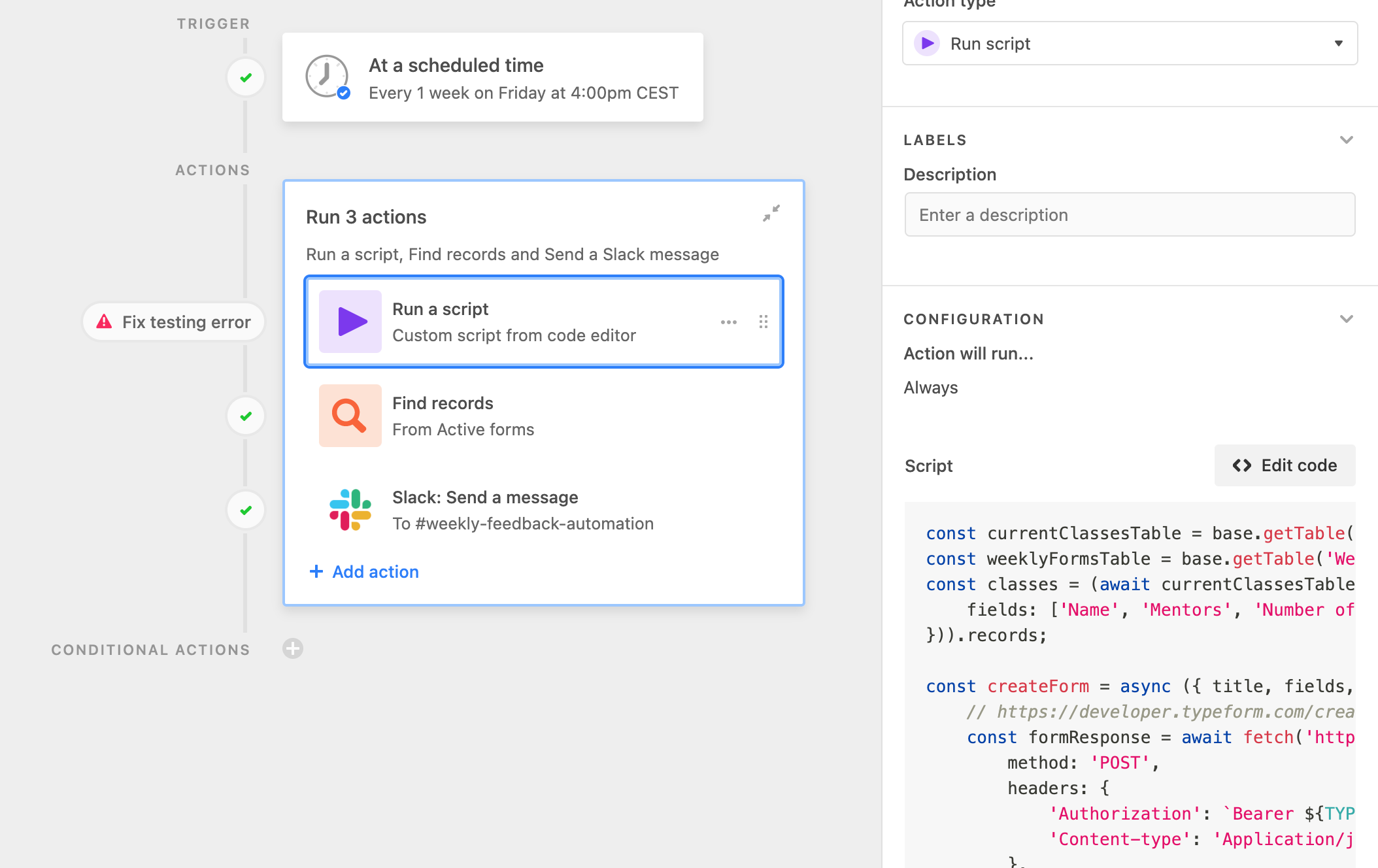Hello!
Here’s what I’m doing at the moment:
Each week I’m generating feedback forms for all active classes. Each form is unique and therefore I’m using the TypeForm Create API to construct the forms from my data in my Airtable.
There’s 32 classes currently and each class requires 2 requests - 1. to create the form and 2. to add a webhook to it.
That’s 64 requests which exceeds a quote of 50 request per script invocation.
What’s the best way to go forward here?
- I can split the script in two, create forms in first script, add webhooks in second script. It will lead to some code duplication:(
- Set up a separate automation run for each form. 32 requests in each run, then 1 request per each automation triggered for every row. That’s +33 automation runs / week
- Just handle this in a script running elsewhere than Airtable… no limits there. Easy for me, but makes it harder to maintain once I leave the project. Someone needs to be able to run and change the CloudFlare workers / Netlify Functions or whatever would be used for this.
- Use Zapier? Maybe Zapier has more generous request limits?
Some solution would scale only to a certain degree. If the number of classes goes over 50, even the first “half” of the script would stop running.
How do you reason about these limits? To be honest it’s a little bit of a headache as I’m already trying to figure out the best algorithms and this adds an another layer of complexity. It would be so nice if Airtable just invoiced me for some minutes of computation power in the style of AWS etc and lifted any sort of hardcoded quotas.

Thanks for any tips on this :pray:


